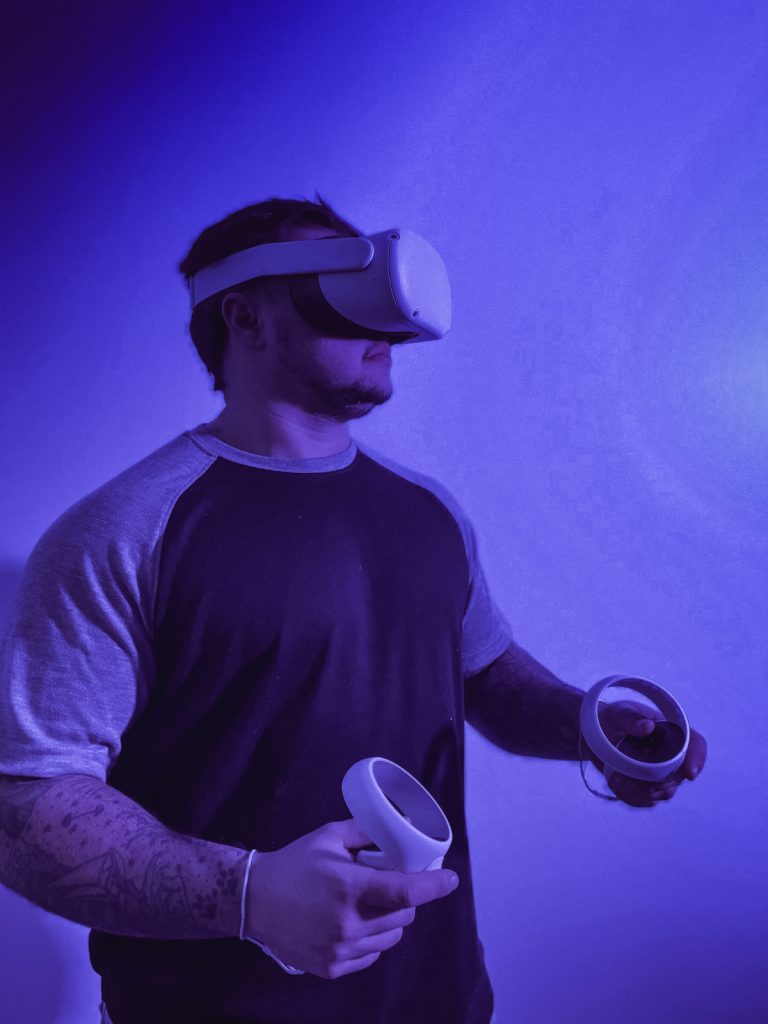Virtual Reality and Genealogy
Imagine standing on a ship docking in Ellis Island at the turn of the 20th century. All around are other immigrants waiting for their chance to start new lives in America. One of the people standing in the line waiting to have their papers checked and go through one of the most famous immigration stations of all time is the user’s great-great-great-grandmother. The user follows their ancestor through the processing station, seeing their ancestor move, talk, and experience their first minutes in America. It also gives the user the chance to better understand what the immigrant experience was like for their family.
Sound like something out of science fiction? Every day this is becoming close and closer to reality. The technology of virtual reality improves all the time. Now no longer considered something only for video games, it’s being used in a variety of industries. Museums, libraries, and researchers are all some of the people embracing the use of VR in their field.
Genealogy is a popular pastime, hobby, and even profession around the world. Many people have a desire to discover and define who they are as a person. Typically, genealogy has been traced by paper records and handed down oral family stories. Two technological advances are changing how people practice genealogy and how people think about ancestry and family trees.

Genealogy is a popular pastime, hobby, and even profession around the world. Many people have a desire to discover and define who they are as a person. Typically, genealogy has been traced by paper records and handed down oral family stories. Two technological advances are changing how people practice genealogy and how people think about ancestry and family trees.
The first technological advancement was DNA. The ability to scientifically trace genetic genealogies was a game-changer for anyone interested in family research. The growth of companies offering affordable at-home DNA testing kits has put this research in the hands of everyday people around the world. Now, people who were cut off from traditional family research could fill in their trees. For example, African-Americans were often shut out of traditional research methods due to the way their ancestors were removed from their homelands and brought the United States. Thanks to DNA, they are now able to trace back and find the places their ancestors lived before they were enslaved. DNA is opening up fields of research for other people whose ancestors were refugees and other groups who experienced a diaspora.
Virtual reality can work side-by-side with DNA and traditional research to bring the past to life for researchers, families, and students. For example, a researcher might be able to digitally interact with their ancestor. They could also travel the paths their ancestors took as they immigrated around the world and see these places as they existed in their family member’s time.
Some programs are already available that focus on a historical figure or time period. Users of these applications can walk down historic city streets, interact with historical figures, and read relevant documents. Some locations popular with family researchers are building their own sites where distant users can walk down streets and access all documents that once required a physical trip to the library.
Researchers are using virtual reality in their genealogical research in other ways, as well. For example, there are VR meetups of genealogy groups that offer lectures and presentations by experts. There are also more casual gatherings where members of the group meet to chat about their research and share tips and strategies.
Another way virtual reality is changing genealogy is by changing what’s possible to accomplish with a family tree. Each ancestor can be clicked on. Beyond just reading their life story or seeing all their documents, which has been possible since the invention of computer-hosted family trees, now the ancestor can tell their own story. Family photos are also being reconceptualized. For example, it’s now possible for photos from the 19th century to blink or move their heads. This will sound familiar to Harry Potter fans because this is the family photographs behaved in both the books and the movies. Now it’s possible for muggles to experience seeing their ancestors move in previously still photographs as well! This technology is being built upon to offer up the ability to fully interact with ancestors as virtual reality programs continue to improve and be introduced to the general public.